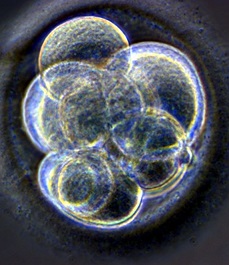Synthetic embryos tested
 Scientists say they have created synthetic human embryos using stem cells, without the need for eggs or sperm.
Scientists say they have created synthetic human embryos using stem cells, without the need for eggs or sperm.
Model embryos, resembling early-stage human development, could hold immense potential for studying genetic disorders and recurrent miscarriage causes.
However, their creation raises significant ethical and legal concerns, as current regulations do not cover lab-grown entities in the UK and most countries.
The synthetic embryos lack a beating heart or rudimentary brain but consist of cells that would typically form the placenta, yolk sac, and the embryo itself, according to reports.
The work has been presented at the International Society for Stem Cell Research's annual meeting, describing the creation of human embryo-like models through reprogrammed embryonic stem cells.
While there are no immediate plans for clinical use, implanting synthetic embryos into a patient's womb is illegal in most countries.
Furthermore, it remains uncertain if these structures can progress beyond the earliest stages of development.
Researchers seek to understand the “black box” period of development, which is limited to 14 days for lab-cultivated embryos, by studying these models.
They aim to gain insights into normal human embryonic development and potential complications without using early embryos for research.
The research builds upon previous work with mouse cells, where stem cells self-assembled into early embryo-like structures containing an intestinal tract, the beginnings of a brain, and a beating heart.
Scientists worldwide are racing to develop human models, and several teams have successfully replicated the earliest stages of development.
The complete details of the latest research conducted by the Cambridge-Caltech lab are yet to be published.
However, researchers explained at the conference that the embryos were cultivated to a stage just beyond the equivalent of 14 days of natural embryo development.
These model structures, grown from a single embryonic stem cell, reached a developmental milestone called gastrulation, where distinct cell lines are formed, setting up the basic body axes.
While lacking a beating heart, gut, or brain, the model exhibited primordial cells, the precursors to egg and sperm cells.
The rapid scientific progress in this field has outpaced existing legislation, prompting UK and global scientists to draft voluntary guidelines for research on synthetic embryos.
The question of whether these structures can potentially develop into living creatures remains unanswered.
Although synthetic embryos from mice appeared almost identical to natural embryos, their implantation into female mice did not result in live animals.
Chinese researchers similarly implanted synthetic embryos made from monkey cells into adult monkeys, showing initial signs of pregnancy but failing to develop beyond a few days.
The cause of this developmental barrier remains unclear, whether technical or fundamentally biological.
The Guardian reports that the UK legislation and that of most countries do not currently encompass synthetic human embryos.
However, Australian legislation defines human embryos differently, potentially including synthetic embryos. If classified as such, the research would require licensing and monitoring by Australia's Embryo Research Licensing Committee, adhering to the 14-day rule.
Scientists highlight the significant potential of better understanding early human development and improving clinical approaches to infertility, miscarriage, and developmental anomalies.
However, they anticipate future debates surrounding the 14-day rule, given the similarities between these synthetic models and human embryos.
The successful creation of human embryo-like models holds promise for studying genetic disorders and advancing reproductive technologies.
These models may enable research that is currently considered too risky with human embryos, such as artificial womb technology.
Nonetheless, ethical guidance is necessary when working with entities that have not previously existed and fall outside existing ethico-legal frameworks.








 Print
Print